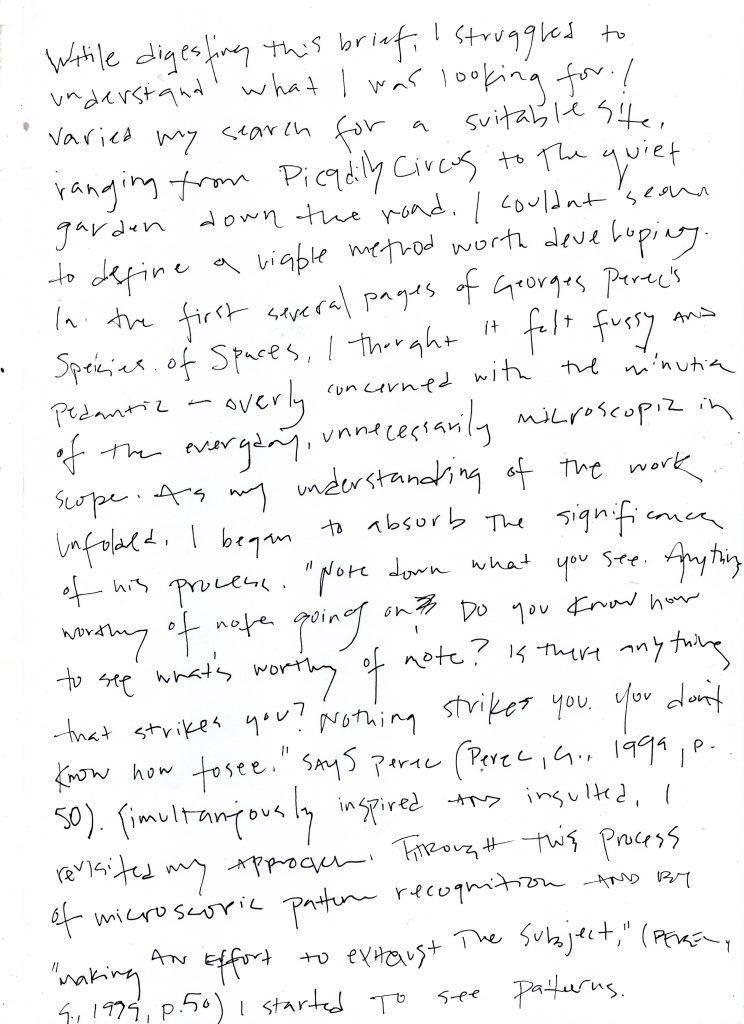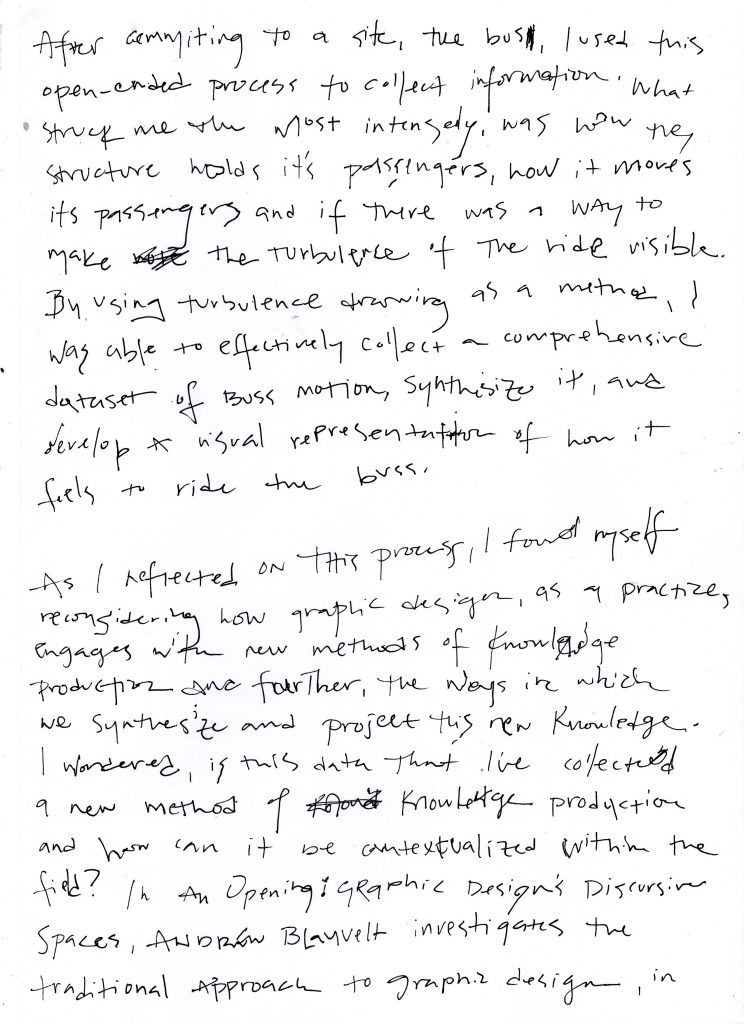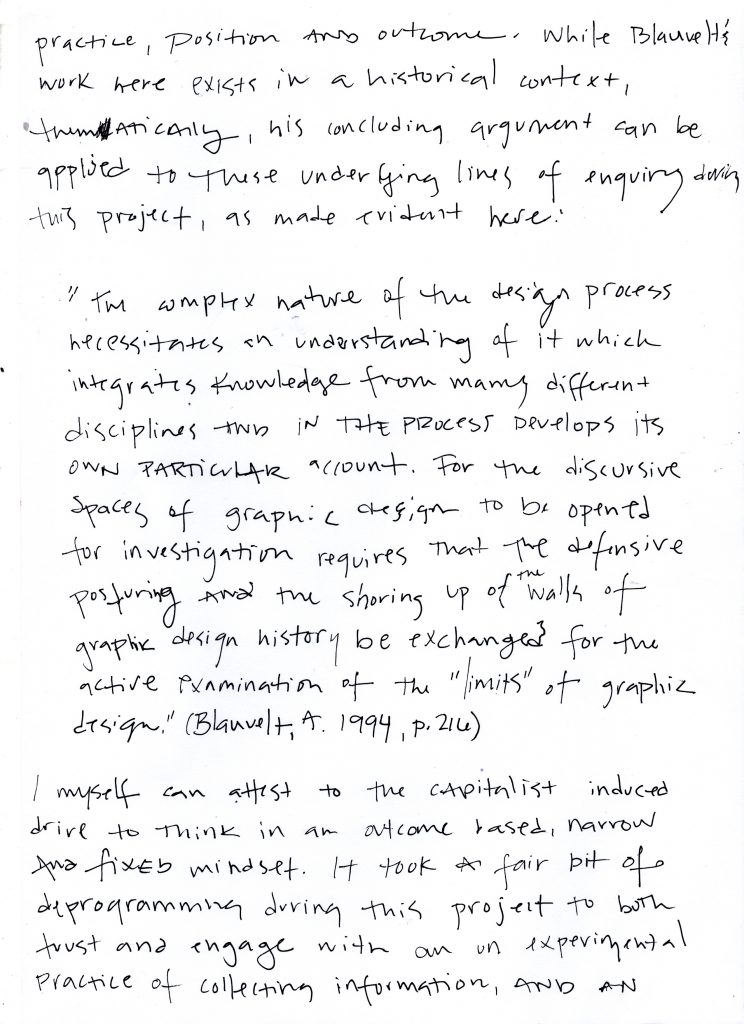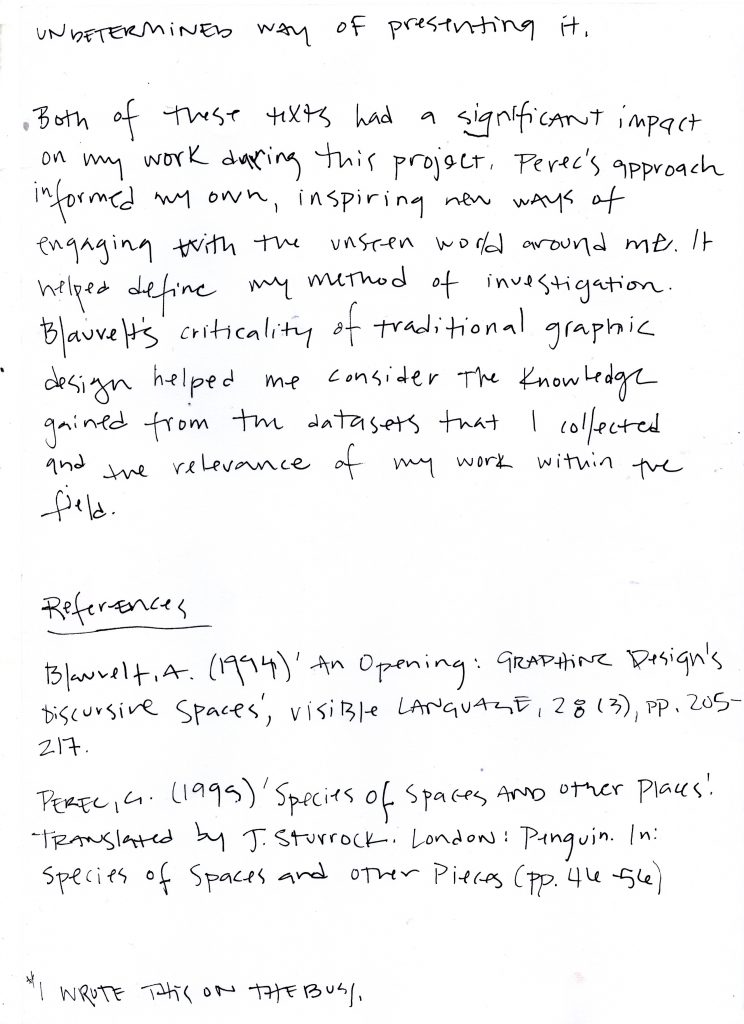



While digesting this brief, I struggled to understand what I was looking for. I varied my search for a suitable site, ranging from Picadilly Circus to the quiet garden down the road. I couldn’t seem to define a viable method worth developing. In the first several pages of Georges Perec’s, Speicies of Spaces, I thought it felt fussy and pedantic – overly concerned with the minutia of the everyday, unnecessarily microscopic in scope. As my understanding of the work unfolded, I began to absorb the significance of his process. “Note down what you can see. Anything worthy of note going on. Do you know how to see what’s worthy of note? Is there anything that strikes you? Nothing Strikes you. You don’t know how to see.” says Perec (Perec, G.,1999, p. 50). Simultaneously inspired and insulted, I revisited my approach. Through this process of microscopic pattern recognition and by “making an effort to exhaust the subject,” (Perec, G., 1999, p. 50) I started to see the patterns.
After commiting to a site, the bus, I used this open-ended process to collect information. What struck me most intensely, was how the structure holds it’s passengers, how it moves it’s passengers and if there was a way to make the turbulence of the ride visible. By using turbulence drawing as a method, I was able to effectively collect a comprehensive dataset of bus motion, synthesize it, and develop a visual representation of how it feels to ride the bus.
As I reflected on this process, I found myself reconsidering how graphic design, as a practice, engages with new methods of knowledge production and further, the ways in which we sythesize and project this new knowledge. I wondered, is this data that I’ve collected a new method of knowledge production and how can it be contextualized within the field? In An Opening: Graphic Design’s Discursive Spaces, Andrew Blauvelt investigates the traditional approach to graphic design, in practice, position and outcome. While Blauvelt’s work here exists in a historical context, thematically, his concluding argument can be applied to these underlying lines of enquiry during this project, as made evident here:
“The complex nature of the design process necessitates an understanding of it which intergrates knowledge from many different disciplines and in the process develops its own particular account. For the discursive spaces of graphic design to be opened for investigation requires that the defensive posturing and the shoring up of the walls of graphic design history be exchanged for the active examination of the “limits” of graphic design.” (Blauvelt, A., 1994, p. 216)
I myself can attest to the capitalist induced drive to think in an outcome based, narrow and fixed mindset. It took a fair bit of deprogramming during this project to both trust and engage with an experimental practice of collecting information and an undetermined way of presenting it.
Both of these texts had a significant impact on my work during this project. Perec’s approach informed my own, inspiring new ways of engaging with the unseen world around me. It helped define my method of investigation. Blauvelt’s criticality of traditional graphic design helped me consider the knowledge gained from the datasets that I collected and the relevance of my work within the field.
REFERENCES
Blauvelt, A. (1994) ‘An Opening: Graphic Design’s Discursive Spaces’, Visible Language, 28(3), pp. 205–217.
Perec, G. (1999) ‘Species of Spaces and Other Pieces’. Translated by J. Sturrock. London: Penguin. In: Species of Spaces and Other Pieces, pp. 46–56.